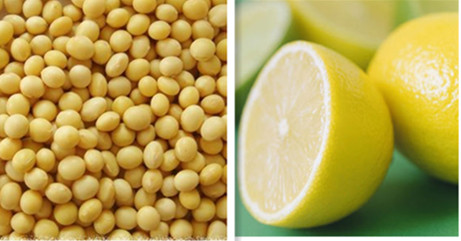What comes to mind when you think of yellow? Sunflowers, the school bus or the smiley face? As a food-junkie and a health nut, when I hear the word yellow, savory soy beans, munchy bananas and sweet corn are things that pop into my mind. That's how much I love food. Hopeless? Perhaps.
However, my fondness for yellow foods is fully justified. In Traditional Chinese Medicine (TCM), the body is believed to be a unified organic being with organs tied to the five elements, five flavors and five colors. Eating food with a certain color can help regulate and strengthen the corresponding organ.
In TCM, the color yellow corresponds with the spleen. The spleen plays a vital role in regulating red blood cell metabolism. It also plays a regulatory role in our immune systems. Red blood cells deliver oxygen to the body, and the immune system protects us from infections and diseases. The importance of both systems goes without saying.
Whether you believe TCM or not, having a colorful plate of food for dinner is always a good thing. Take a look at following delicious yellow foods that possess health-benefiting properties.
Lemons
In 1747, James Lind discovered that vitamin C from citrus fruits helped cure scurvy suffered by seamen. Lemons can also enlighten moods when used in aromatherapy, improve blood circulations and enhance immunity. Moreover, lemons are extremely rich in vitamin C, one of the most potent antioxidants out there that serve to fight premature aging.
The acidity of lemons can be too harsh on our stomachs when consumed in large quantities. Take precautions when eating lemons on their own. Lemons should be treated as icing on the cake and used in moderation.
Soy beans
The nutritional value of soy beans are in between that of meat and vegetables. They are a healthy source of protein and are rich in isoflavones. Isoflavones can help relieve certain menopausal symptoms and can act to prevent cancer, slow or reverse the signs of osteoporosis and reduce the risk of heart diseases.
The Asian diet is very rich in soy products. Tofu is probably the most representative product of soybeans. Other soy products include soy sauce, fermented bean paste, natto (a Japanese side dish and a personal favorite) and tempeh (Indonesian soy product, often used as meat substitute in vegetarian dishes.)
The skins of soybeans are high in fiber and should not be thrown away. They can enhance digestion, reduce blood cholesterol and decrease risks of cardiovascular diseases. Soybeans also contain lots of iron, a handy helper to relieve anemia.
Avoid deep-frying or stir-frying soybeans as it prevents absorption of proteins. Those with chronic indigestion or bowel irregularities should avoid consuming too much soybeans. Soy beans contain substances that mimic estrogen. They are widely applied in diets of post-menopausal women to alleviate menopausal-related symptoms. However, consumption of too much of any product, no matter how good it is for you, can be of harm. Remember, moderation is key.


















